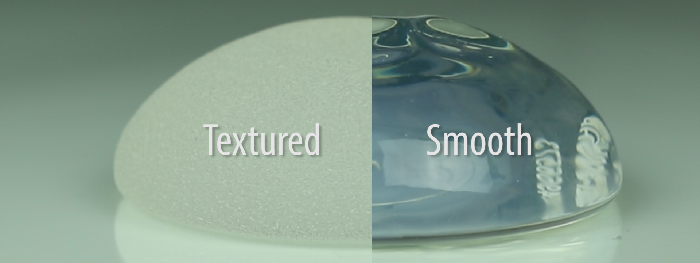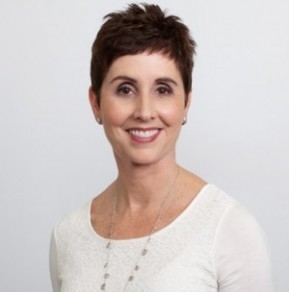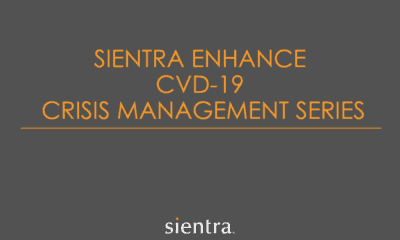The disease is known as Breast Implant-Associated ALCL, or Anaplastic Large Cell Lymphoma. The disease is very rare, but has been found to be associated with textured breast implants. There is much known about this disease, but also there is a lot of misinformation, particularly in the media, and patients often get the wrong information.
PSC Deep Dive, launched in 2018, takes an in-depth look at Hot Topics that require proven experts to provide timely and credible information.
Board certified plastic surgeons Dr. Caroline Glicksman of New Jersey and Dr. Pat McGuire of St. Louis moderate the first PSC Deep Dive episode, where they discuss BIA-ALCL with leading plastic surgeons involved in research and issuing new guidance for breast augmentation procedures.
What is BIA-ALCL?
Breast Implant-Associated ALCL is a lymphoma specifically associated with breast implants following breast implant surgery. The numbers are still being worked out, but researchers and surgeons have found the disease to be fairly rare – about 1 in 4000 to 1 in 30,000 textured breast implant patients may be susceptible. Considering the chances of breast cancer for all women is 1 in 8, BIA-ALCL is rare, but real.
The disease typically presents 7 to 8 years following their procedure. The research shows that textured implants are currently the only known cases with no confirmed smooth only cases. Dr. McGuire explains how patients present with the disease, typically. “It usually presents with swelling in one or both breasts,” she explains. “Sometimes there’s a lump in the breast involved as well. It seems to be associated with textured surface implants. Fortunately a highly treatable diseases if caught early and treated appropriately.”
The bottom line is, BIA-ALCL is both rare and readily treatable if caught early. While these two current truths are certainly a relief, it’s important to know the initial understandings as to why the disease may happen in the first place, how to avoid it, and how patients can safely monitor their augmentation in the years following their surgeries.
4 Factors that Cause BIA-ALCL
Dr. Anand Deva is a board certified plastic surgeon in Australia and is one of the leading researchers into capsular contracture, a common breast augmentation complication that is somewhat similar in how BIA-ALCL may first appear. Dr. Deva explains 4 factors that lead to BIA-ALCL worth nothing:
- Textured implants
- chronic inflammation form specific types of bacteria
- Genetics
- Time (7-8 years)
All of these factors have a varying impact on the occurrence of BIA-ALCL. Numerous studies have shown that textured implants are associated, and data points to the increase in surface area as being a harbor for a higher number of bacteria. The disease may be induced by chronic inflammation surrounding a breast implant. This concept of the microbiome driving disease is not a new one, and similar bacterial-derived malignancies are known in general surgery, oral surgery, and urology.
Dr. Deva points out the only 2 modifiable factors are the use of a textured implant, and decreasing the bacterial load around the implant thru surgical technique.
How Does a Patient Know if She Has ALCL?
Even though rare, Breast Implant-Associated ALCL has occurred in patients – the majority of which were treated successfully with the issue resolved. The question then, how do patients know? Board certified plastics surgeon Dr. Mark Clemens states, “60-80% of patients will have a large fluid collection developing around a breast implant, and about 30% can present with a mass. Any kind of asymmetry of the breast, something unusual that doesn’t look right, really needs to lead them back to their physician for evaluation.”
For patients, if any kind of asymmetry (or differences in the breasts) form, it’s important to go see their physician quickly. While asymmetries can be caused by numerous, more common issues, it can also be an early signs of BIA-ALCL.
“Her physician will draw out some of that fluid and send it for CD30,” continues Clemens. “If CD30 comes back positive, it also requires looking at the cells under a microscope and seeing large anaplastic cells.” When caught early, BIA-ALCL is very treatable.
Textured Breast Implants
When it comes to textured implants, their association with Breast Implant Associated-ALCL does not mean they should be avoided wholesale. Dr. Steve Teitelbaum is a board certified plastic surgeon in Santa Monica, and like many of his colleagues and peers, continues to use textured implants in the right cases. The fact is, textured, anatomic (shaped) implants offer a superior augmentation in a subset of patients. Considering that the risk of BIA-ALCL is extremely low, and the benefits of textured implants in some patients very high, Teitelbaum feels it’s important to offer the option – so long as the patient knows what may come along with it.
“Textured shaped [implants] have a big advantage,” describes Teteilbaum. “[A textured implant] is firmer, it’s more money, it can rotate, and it can be associated with BIA-ALCL.” These are four things that are true about textured implants, and patients need to understand them before accepting.
Beyond implants, surgical technique is absolutely critical in preventing bacterial contamination at the time of surgery. This pathway is well known in the pathogenesis of the most common complication of all breast implants, capsular contracture. Specific, proven techniques championed the past 20 years by Dr. William P. Adams Jr. and Dr. Deva were recently published as their 14 Point Plan to minimize the bacterial load around breast implants. While the plan and these techniques have proven to reduce the high number of capsular contracture complications to as low as 1%, many believe the same concepts will minimize risk of BIA-ALCL.
The True Key to Great Breast Augmentation Results and Health – Patient Follow-Up
When the surgery is complete and the results settled, it may seem like patients are then on their own. Perhaps if their breasts become asymmetric at some point a few years down the line, they may return to their surgeon (hopefully their surgeon, and not a different one) and check to make sure everything is OK. While this is all well and good, Drs. McGuire and Glicksman make it a point to schedule these check-ups so that they may fully aware of the progress of their patients over their lifetimes.
A commitment to patient care is what separates great surgeons from great surgeon physicians. Having patients come in for a yearly check-up, or even 2 years, means that surgeons like Glicksman and McGuire can look themselves at the implants and decide if everything is OK or not. Perhaps the patient has some concerns that can be readily rectified by an experienced surgeon and their fear alleviated, or maybe something the patients hasn’t seen will catch the eye of their surgeon. Preventative maintenance requires more from the surgeon and the patient, but succeeds at providing the best possible situation to guard against minor and major complications alike.
Stay tuned for Deep Dive Breast Implant-Associated ALCL Part 2 next week with guest experts Dr. Marshal Kadin and William P. Adams Jr., MD.



















Facebook
Twitter
Instagram
YouTube
RSS